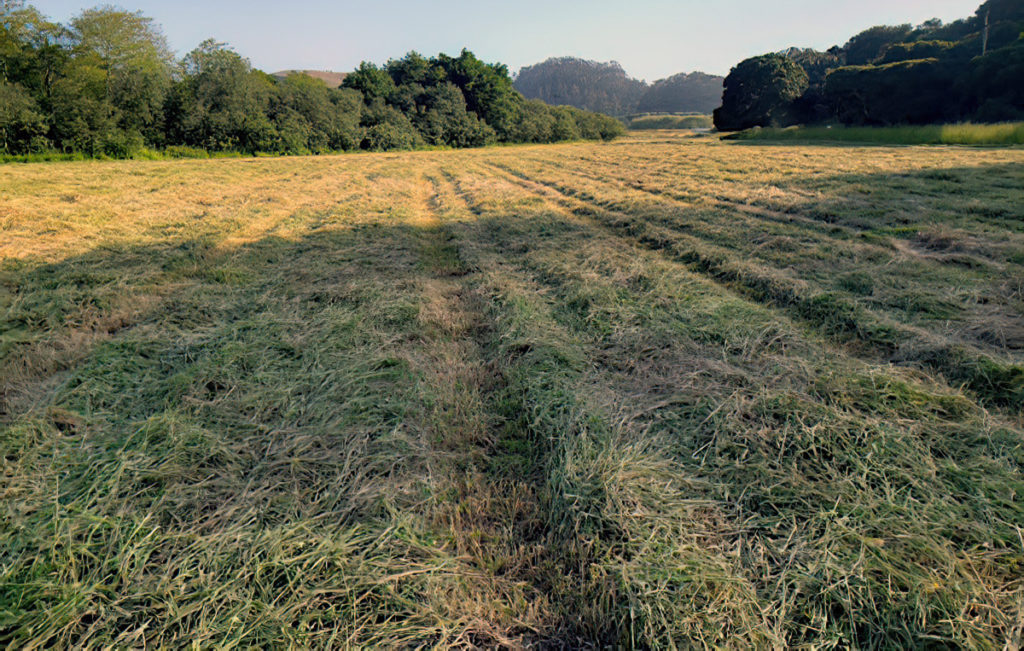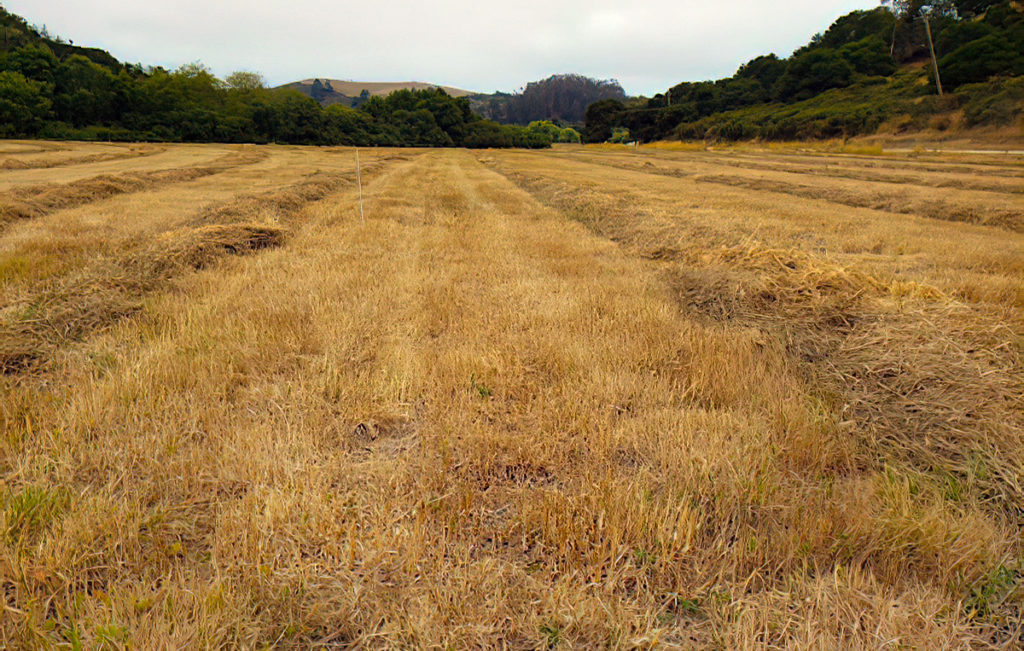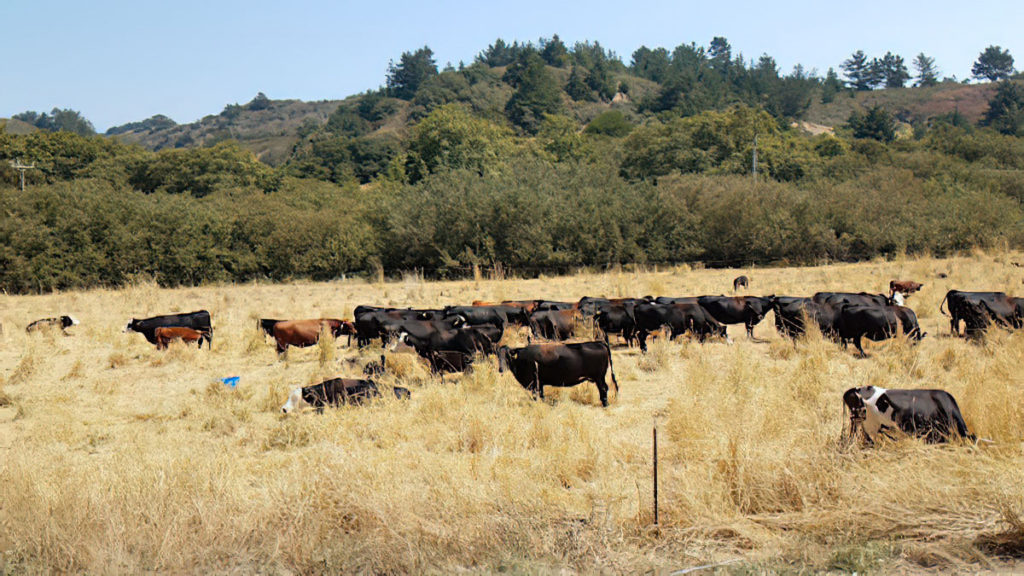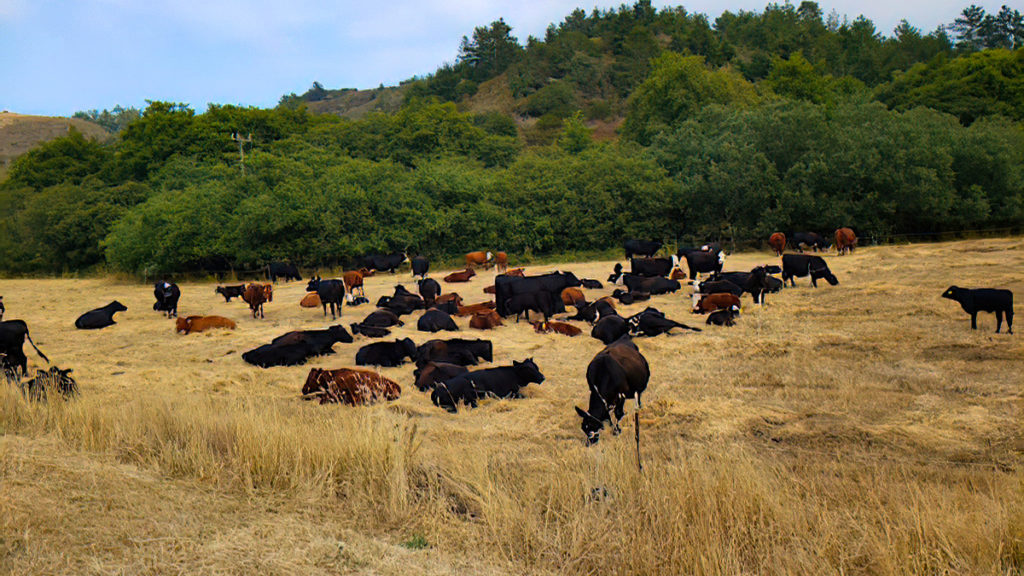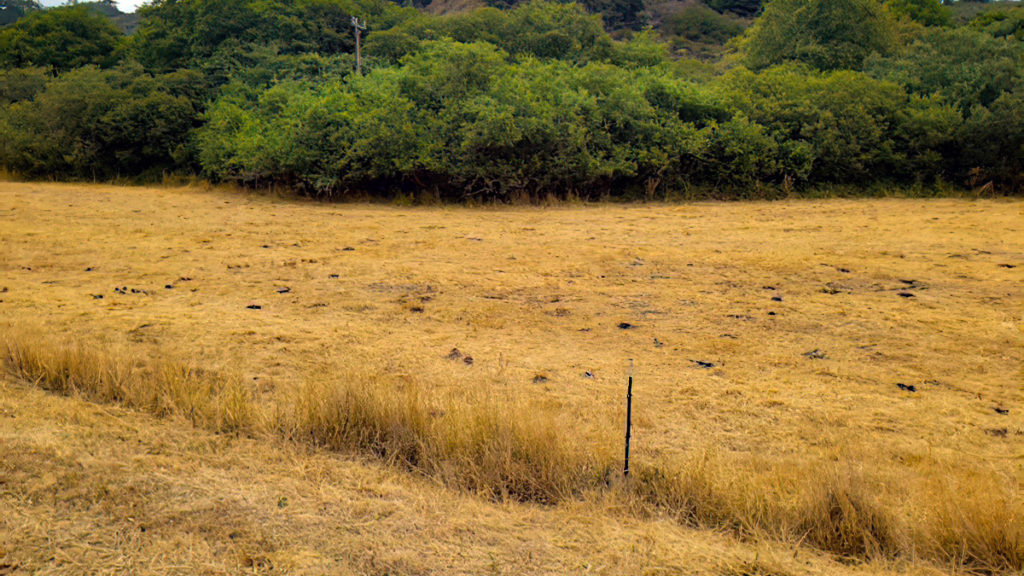Swath grazing is a practice where forage is cut into a swath (a long row of mowed forage) and left in a field as stored feed for cattle
Swath Grazing Harding Grass
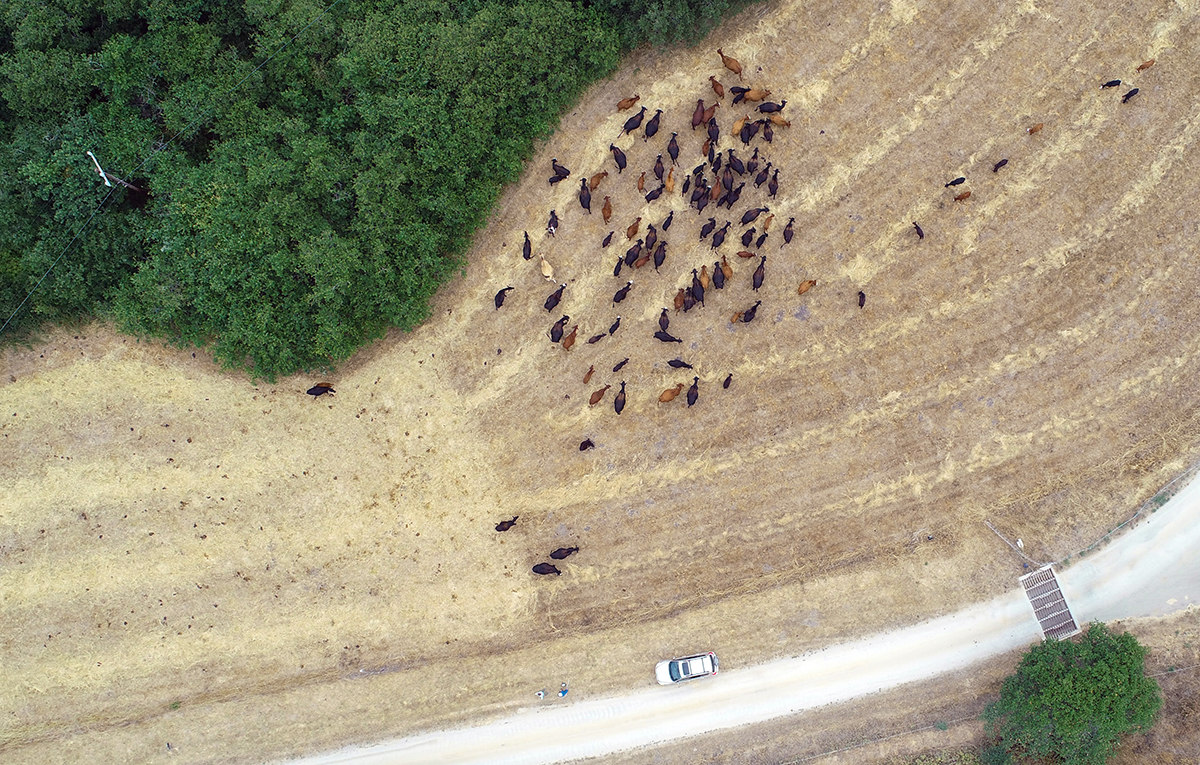
By: Mark Biaggi
There is no such thing as a new idea. It is impossible. We simply take a lot of old ideas and put them into a sort of mental kaleidoscope. We give them a turn and they make new and curious combinations. ― Mark Twain
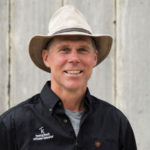 Swath grazing is a practice where forage is cut into a swath (a long row of mowed forage) and left in a field as stored feed for cattle during the non-growing season. In the right climate, this can be an extremely economical practice as compared to traditional haying as it eliminates baling and handling costs.
Swath grazing is a practice where forage is cut into a swath (a long row of mowed forage) and left in a field as stored feed for cattle during the non-growing season. In the right climate, this can be an extremely economical practice as compared to traditional haying as it eliminates baling and handling costs.
While there are many options for storing feed for your animals, determining the ‘right’ one is a matter of matching practices to your context. My time in the Peace Corps taught me that feed does not always need to be stored in a bale, silage pit, or bag to retain nutritional value. Growing up on a ranch where we made and purchased hay, the idea of cutting hay, leaving it in the field rather than baling it, hauling it in, stacking it, and then hauling it back out struck me as a smart and efficient practice for TomKat Ranch especially as we have portable electric fencing to partition fields and ensure cattle get access to only the hay they need each day.
At TomKat Ranch, April and May provide a “Spring flush” the rapid growth of forage that needs to be stored for consumption later in the year. Stockpile forage, grass left to grow to maturity, and grazed later as needed is a good practice in regenerative ag on rangelands. We have a lot of Harding Grass, a very productive introduced perennial cool-season grass with a long growing season. It was first introduced as a hay and forage crop and has since become endemic in many areas of California. If left to stand it will shade and crowd out native grasses, it also serves as a fire hazard as it becomes unpalatable to animals if not grazed at the right time, and therefore cannot be stockpile forage. Since our mission is to regenerate grasslands and biodiversity above and below ground, we have attempted to use cattle grazing to manage overabundant stands of Harding Grass. We have tried grazing with a variety of intensities, durations, and recovery times. While shortening recovery times during Spring grazing has helped limit some Harding Grass expansion, we have not been able to graze all stands across the property in this manner.
We have also tried mowing to reduce unpalatable overshading. Mowing, the traditional method locally, removes the upper unpalatable plant material but creates a thatch layer so thick that it can contribute to limited plant diversity. The thatch often is so thick that it can’t contact the soil and therefore doesn’t break down and turn into food for soil microbes.
Most Swath Grazing is mechanically harvested in the fall and fed out on frozen ground in the winter. Our climate is different so we asked ourselves “how can we adjust this practice to our Mediterranean context?” One option was to harvest Harding Grass when it is palatable and nutritious, store that forage, and feed it out during the non-growing season. Thus our focus on harvesting the Harding Grass in late spring/early summer and feeding it out in late summer through fall.
Swath Grazing Trial
To test the Swath Grazing method in our Mediterranean context, we selected our “Front Field”, a Harding Grass-dominated pasture, flat enough to access and operate a tractor and mower, brush-free.
On June 17, 2021, we mowed 6 acres of the pasture. Given the realities of the dry year, 2 weeks earlier may have been preferred to improve palatability, but the contractor was busy cutting his own fields. We set the height of the mower 8-10” from the ground with the goal of leaving at least 1 green leaf of any plant still growing in the field an opportunity for regrowth. With only 0.15” of rain in the previous 90 days, there was very little regrowth.
The cut forage was left in a long row for a week to dry. In an effort to decrease the amount of forage surface area exposed to the sun and reduce the loss of nutritional value, two windrows were raked into one combined windrow.
The next two months were a mix of weather conditions, oscillating between sunny and foggy days, and dry and damp conditions. The outside, surface layer of hay was bleached by the sun, but it did not blacken or rot.
Due to our grazing rotations with the cattle, we moved cattle back to the Front Field on August 9. Based on past experience and number of cattle, we estimated we would graze the herd (76 Animal Units), pairs (cow-calf), replacement heifers, yearling steers, and 3 bulls for the next 2-3 days with 2 moves per day using approximately 2 acres per day.
On Day 1, we gave them generous space, we did not want to short them on feed and let them settle without pressure onto a feeding system they were not accustomed to. By afternoon the cattle were settled and it was obvious they were going to utilize more of the feed than we had anticipated.
Starting on Day 2, we reduced the feed space provided and increased the moves to 3 times per day, approximately 4-5 hours between each move. When we arrived for the daytime moves, the cattle were often lying down, ruminating and not eager to move until the new section was opened—a good sign that the feed was satisfying their needs. In total, we grazed this field for 7.5 days.
At first glance, it appeared that we were achieving approximately 80% utilization of the swath. After further observations, it became clear that we achieved closer to 100% swath utilization, as anything not consumed by the cows had been trampled, pushed, kicked around the field, and was thus now making contact with the soil and, therefore, in a position to feed the microbes.
Reviewing the Numbers
To compare, we use the following:
- Animal Unit. (1 AU = 1,000 lbs) Animal unit equivalent allows for calculating feed and water requirements and consumption.
- AUD Animal Unit Day – Feed required for one Animal Unit for 1 day.
- Cattle consume approximately 3% (rounded number accurate enough for this project) of their weight per day in dry matter forage.
- 1AUD eats 30lbs of forage/day.
- 1 AU produces 63 lbs of manure/day.
Projected:
- 2 acres per day.
- 76 AU for 3 days (76AU x 3 D = 228 AUD)
- 1 AU x 3 % = 30lbs/day/AU x 228 days = 6,840 lbs of forage consumed.
- Herd moved twice per day. Intensity 76AU/acre per move
Actual:
- Average 0.8 acre per day.
- 76 AU x 7.5 days = 570AUD. A 250% increase over projected days of feed.
- 570 AUDx 30lbs/day = 17,100 lbs forage consumed. Additional 10,260 lbs of feed consumed by the herd.
Intensity: Herd moved 3 times per day averaged 280 AU/acre (360% increase). This increase provided excellent disturbance, manure, and urine distribution. With the soil hard and dry we created a potential seedbed and improved infiltration by breaking soil crust, fully trampling all non-eaten materials, and spreading out dung piles making them less fly friendly.
In conclusion, the Swath Grazing allowed us to increase the utilization of stockpiled Harding Grass that would have otherwise become unpalatable plant material. It provided a higher plane of nutrition to the cattle than the dry feed otherwise available. The additional consumption of forage through the cattle’s rumen improves the cycling of carbon and minerals, which will help improve the water cycle and provide microbial food which improves the soil health. Additionally, this style of grazing allowed the cattle to deposit roughly 21,546 pounds of manure and 4,104 gallons of urine onto the pasture. These increases by the cattle are first a food source for microbes and will eventually increase the fertility of the pastures.
Our next steps for 2022.
- Set up monitoring and testing
- Set up long term transects to monitor plant diversity
- Establish photo points
- Compare forage value inside and outside of swathed areas.
- Track costs.
- Track animal production. (use Yearling gain as a measure of success)
